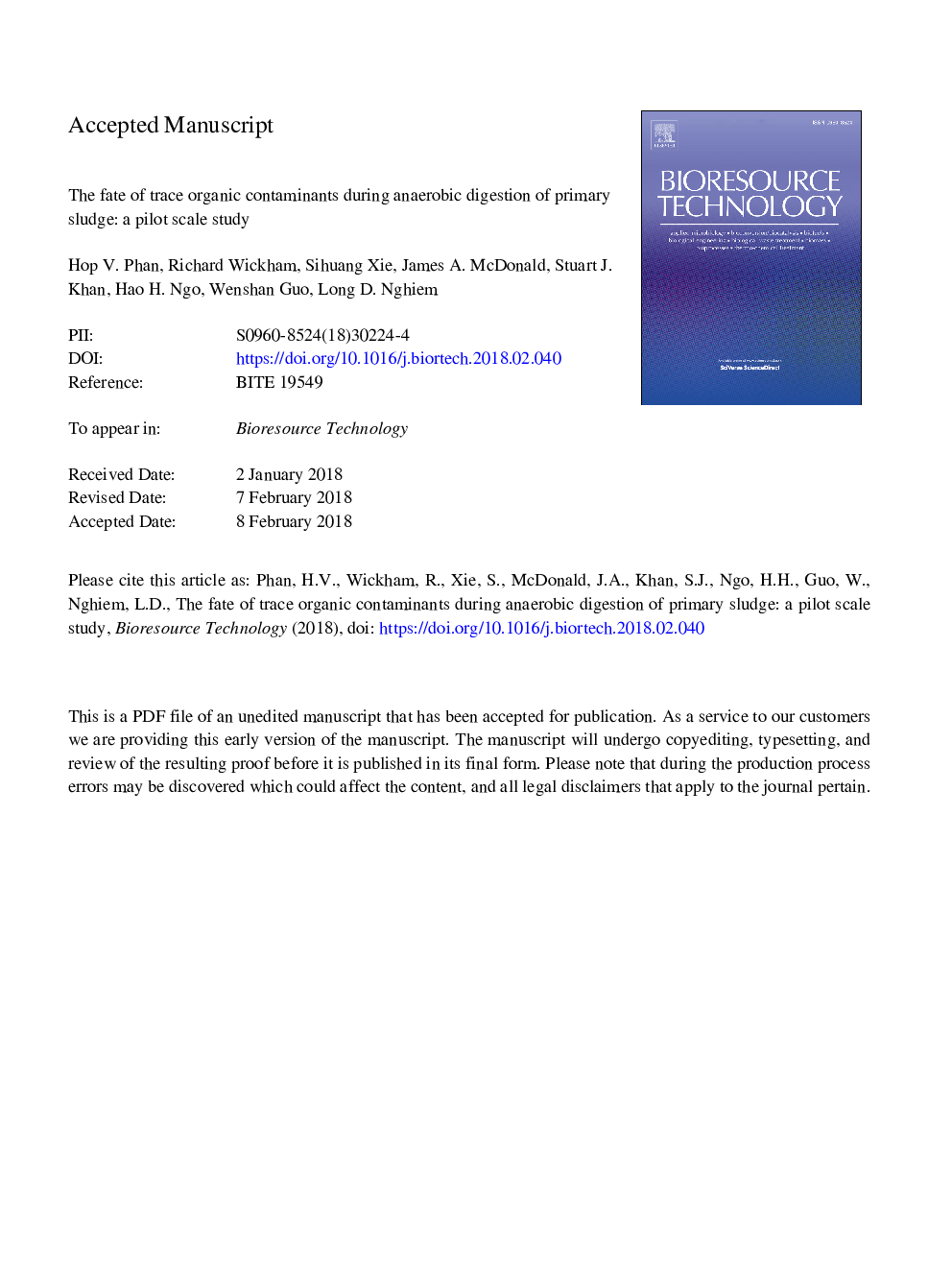| Article ID | Journal | Published Year | Pages | File Type |
|---|---|---|---|---|
| 7067832 | Bioresource Technology | 2018 | 34 Pages |
Abstract
A pilot-scale study was conducted to investigate the fate of trace organic contaminants (TrOCs) during anaerobic digestion of primary sludge. Of the 44 TrOCs monitored, 24 were detected in all primary sludge samples. Phase distribution of TrOCs was correlated well with their hydrophobicity (>67% mass in the solid phase when LogDâ¯>â¯1.5). The pilot-scale anaerobic digester achieved a steady performance with a specific methane yield of 0.39-0.92â¯L/gVSremoved and methane composition of 63-65% despite considerable variation in the primary sludge. The fate of TrOCs in the aqueous and solid phases was governed by their physicochemical properties. Biotransformation was significant (>83%) for five TrOCs with logDâ¯<â¯1.5 and electron donating functional groups in molecular structure. The remaining TrOCs with logDâ¯<â¯1.5 were persistent and thus accumulated in the aqueous phase. Most TrOCs with logDâ¯>â¯1.5 were poorly removed under anaerobic conditions. Sorption onto the solid phase appears to impede the biodegradation of these TrOCs.
Keywords
Related Topics
Physical Sciences and Engineering
Chemical Engineering
Process Chemistry and Technology
Authors
Hop V. Phan, Richard Wickham, Sihuang Xie, James A. McDonald, Stuart J. Khan, Hao H. Ngo, Wenshan Guo, Long D. Nghiem,
